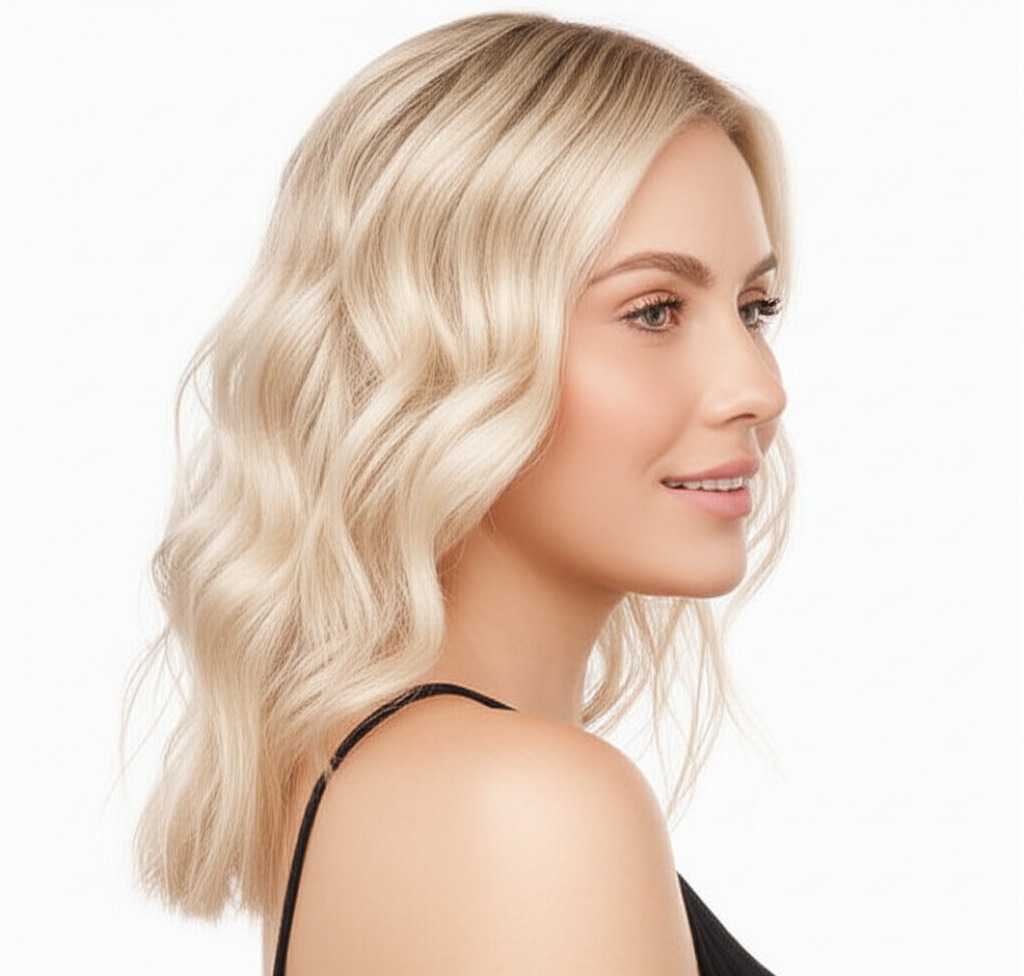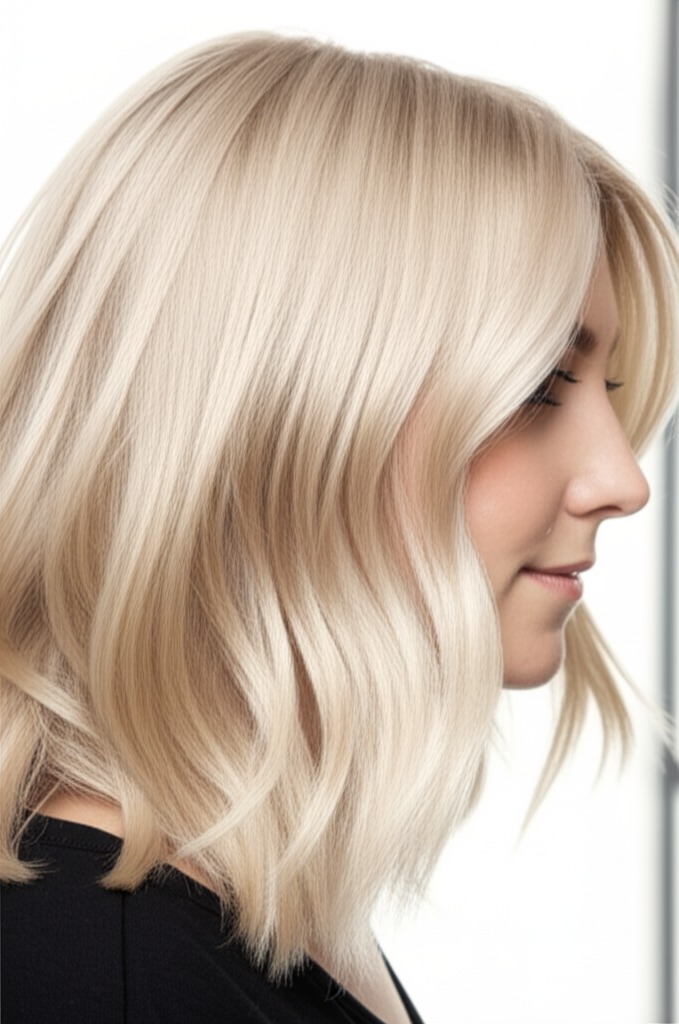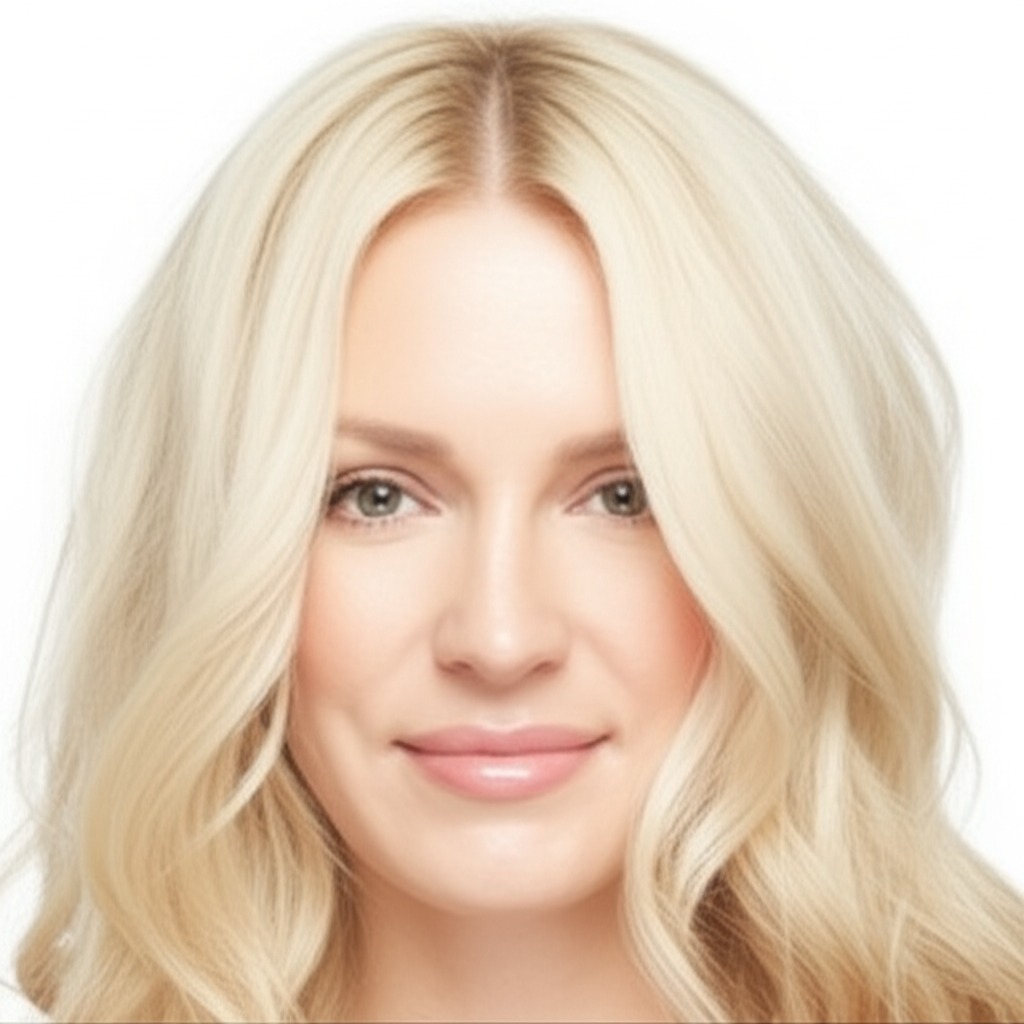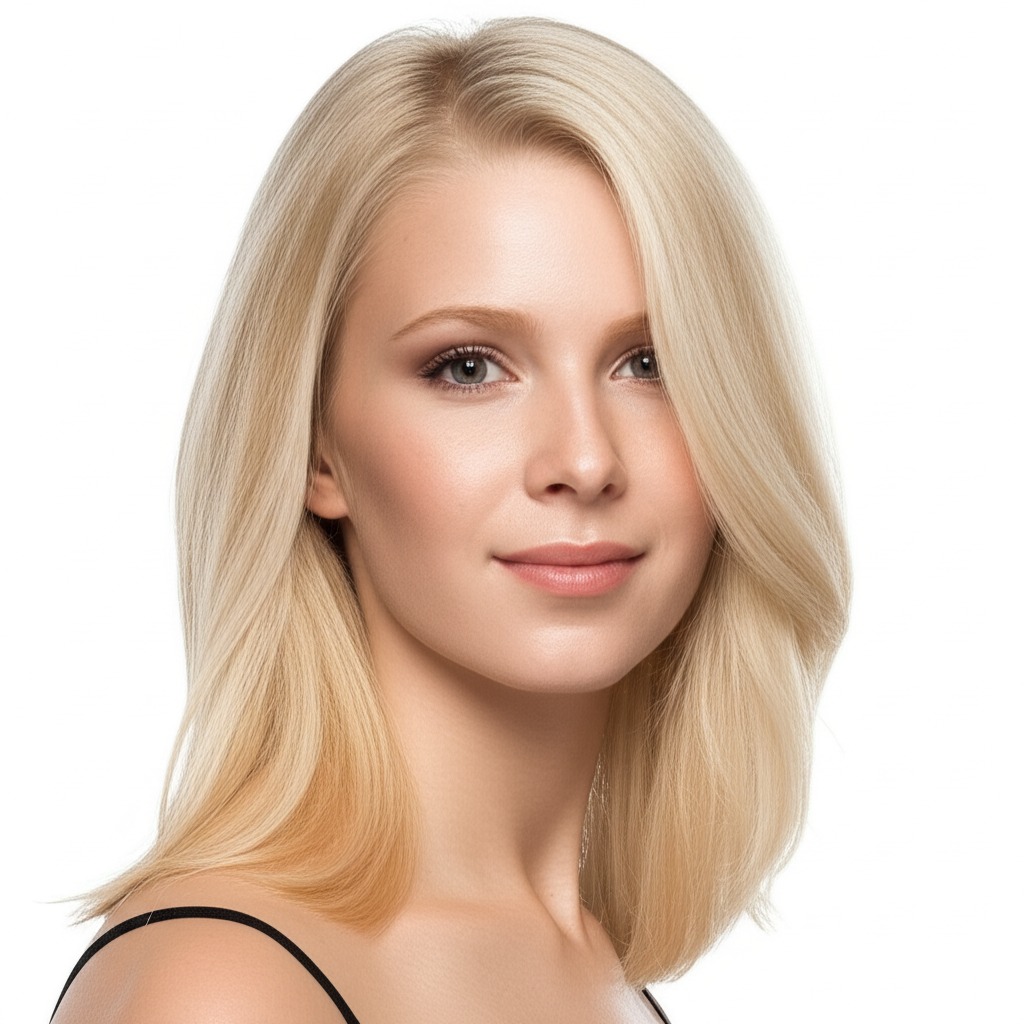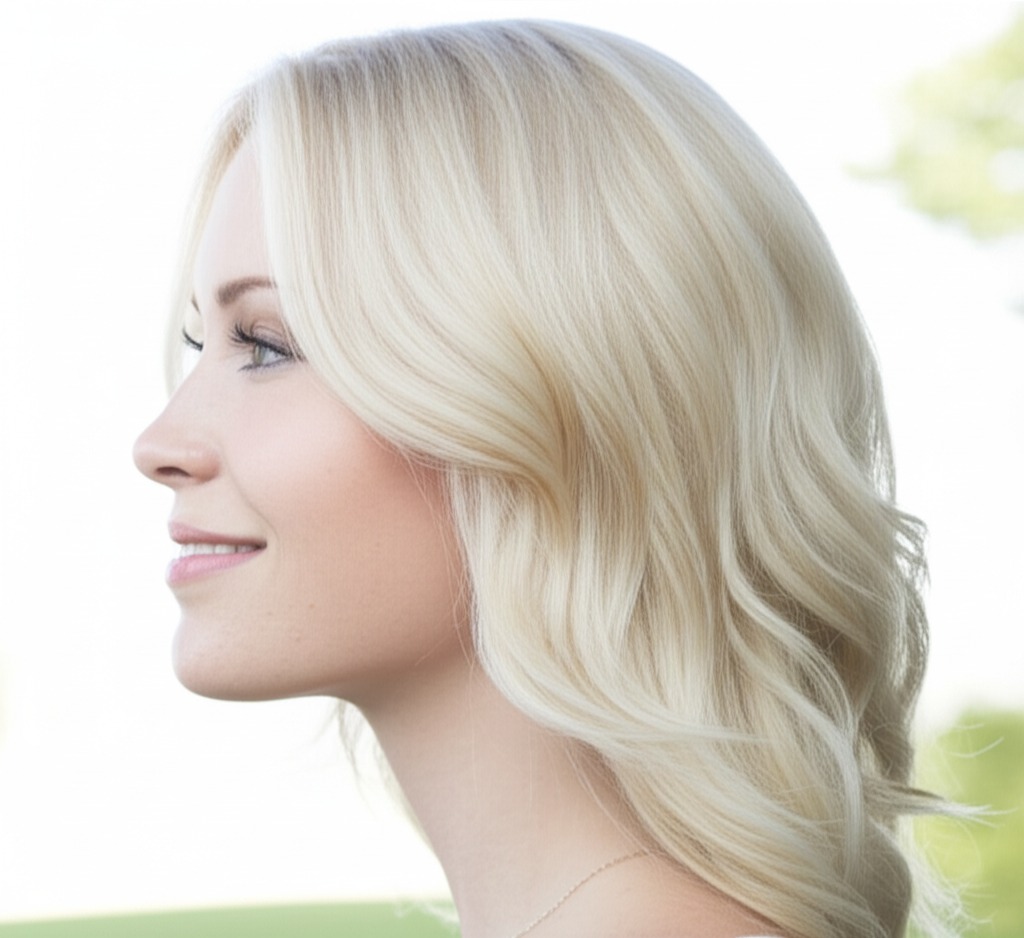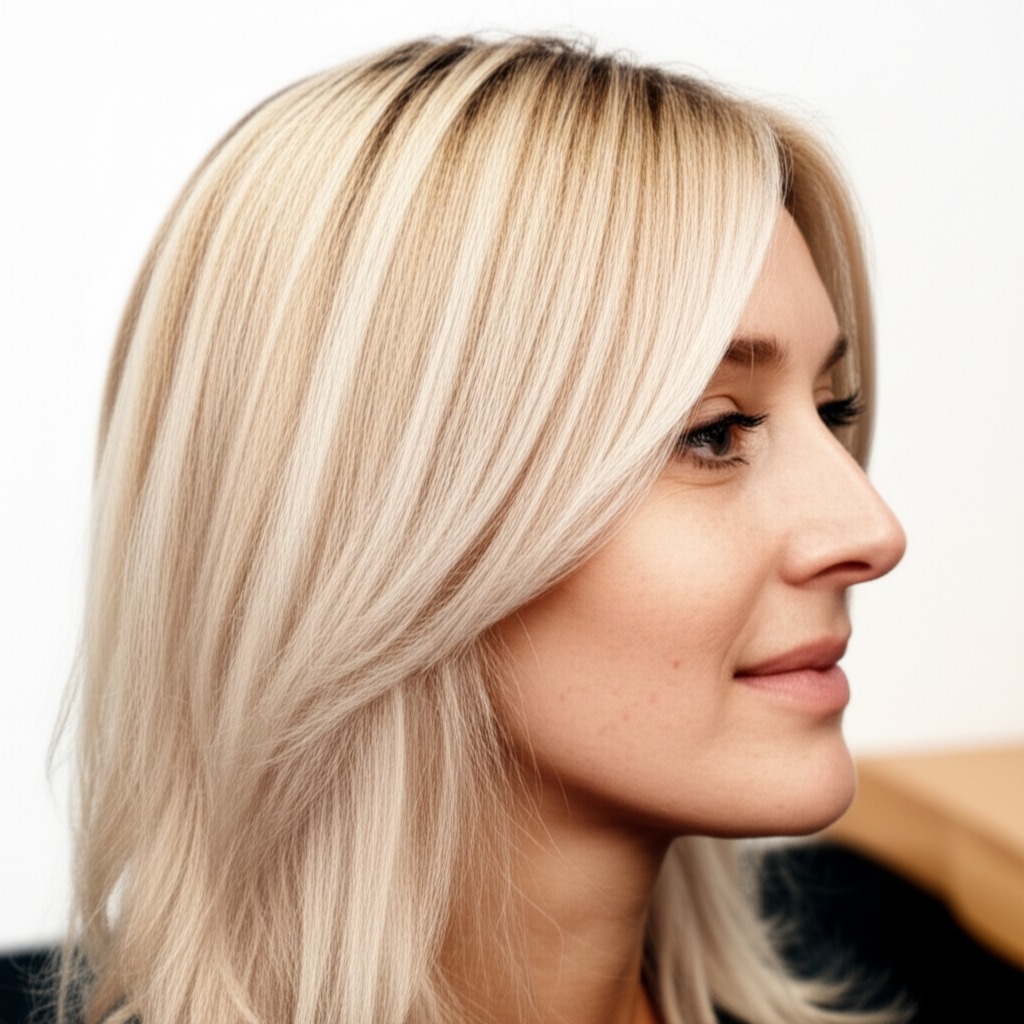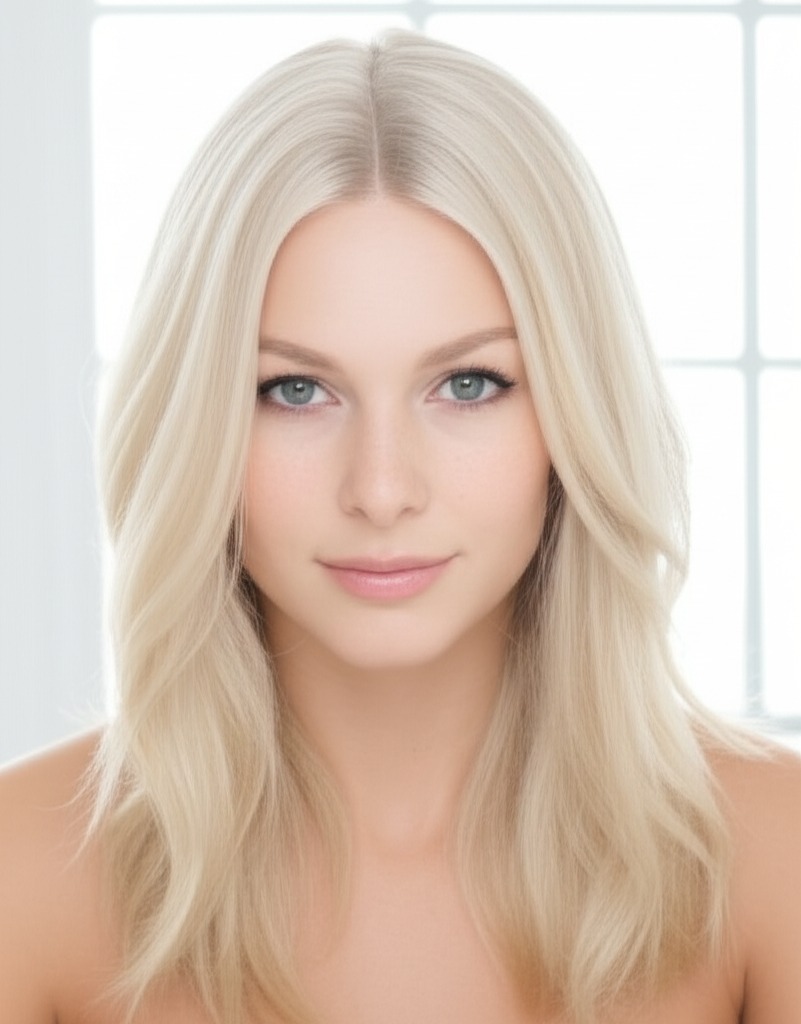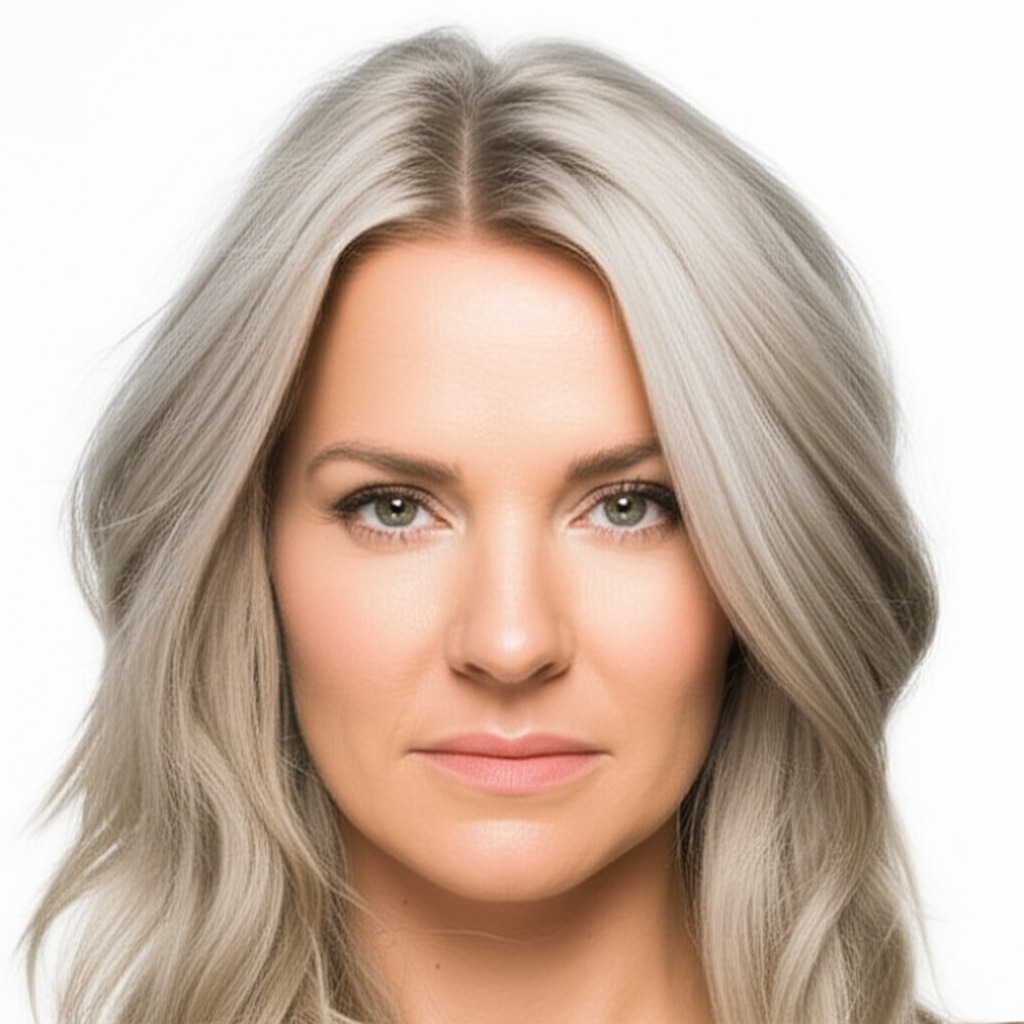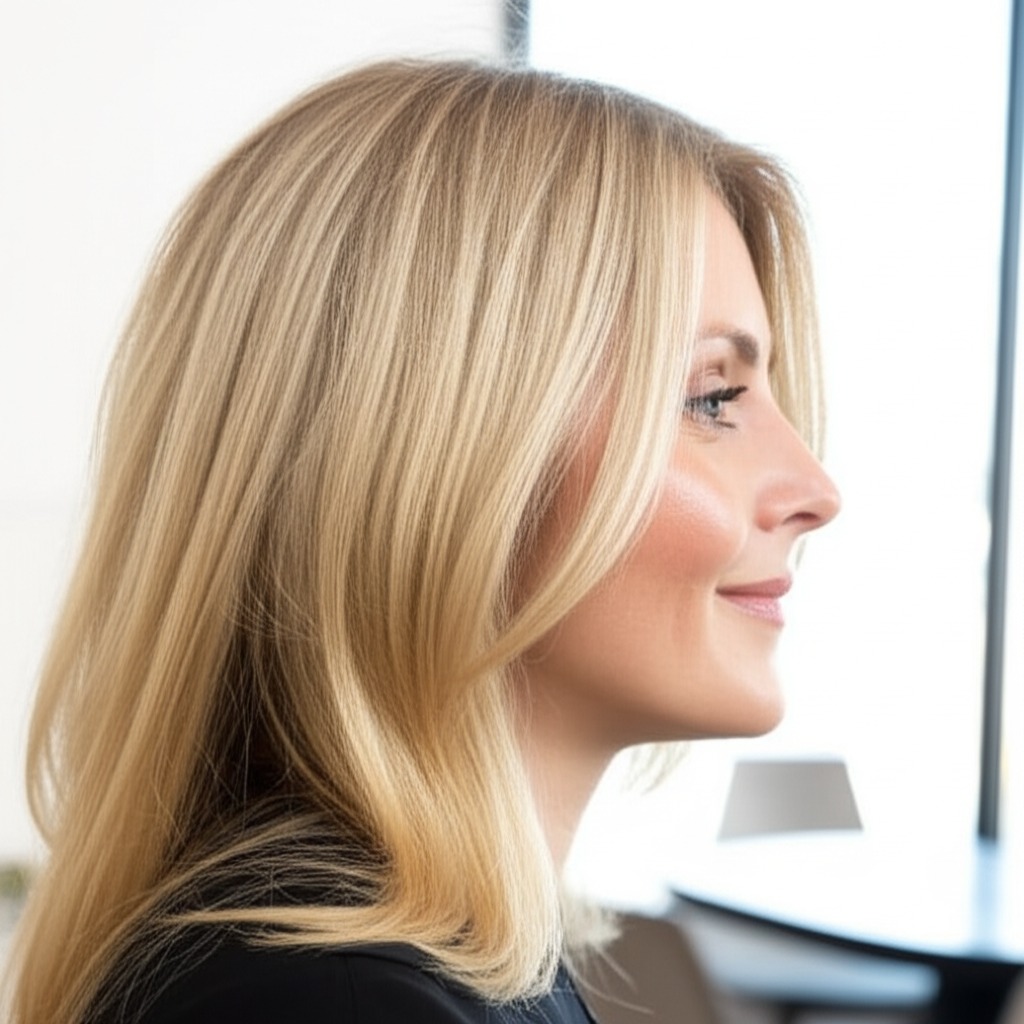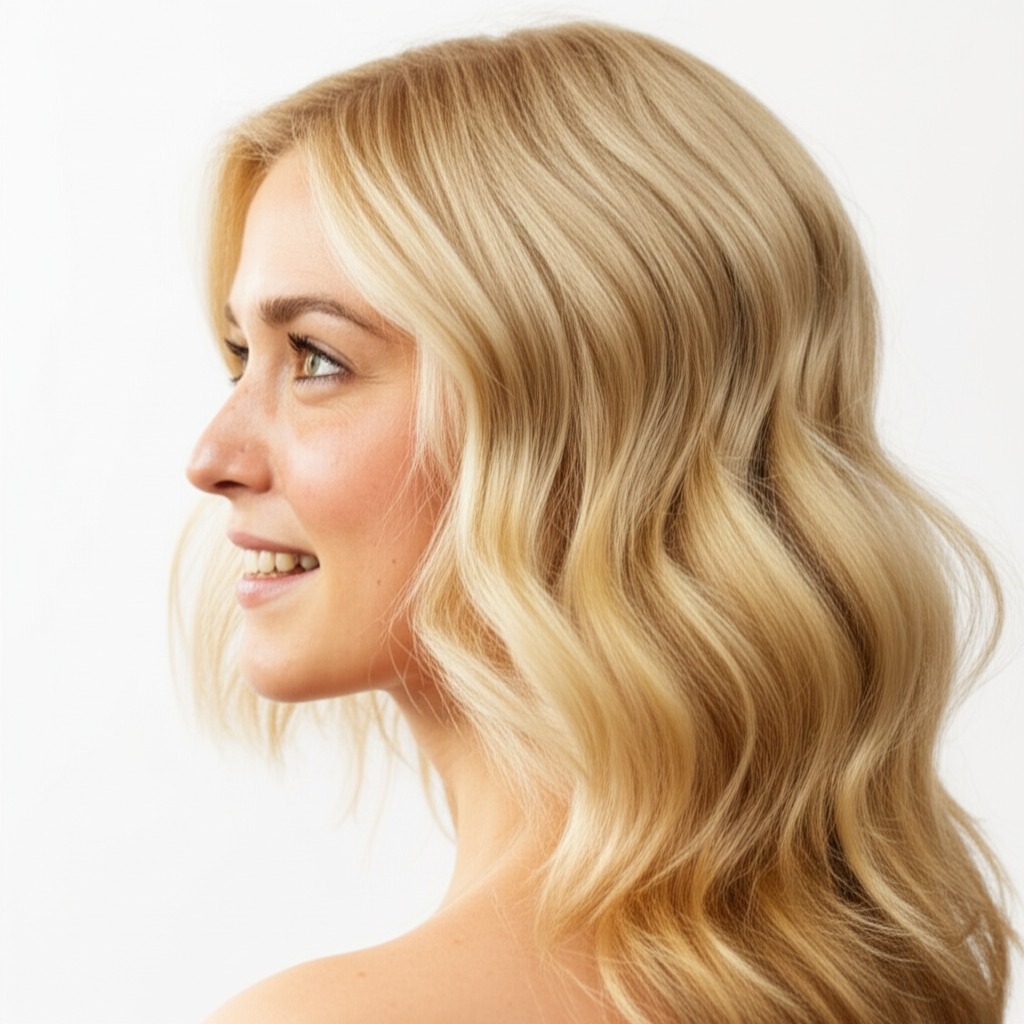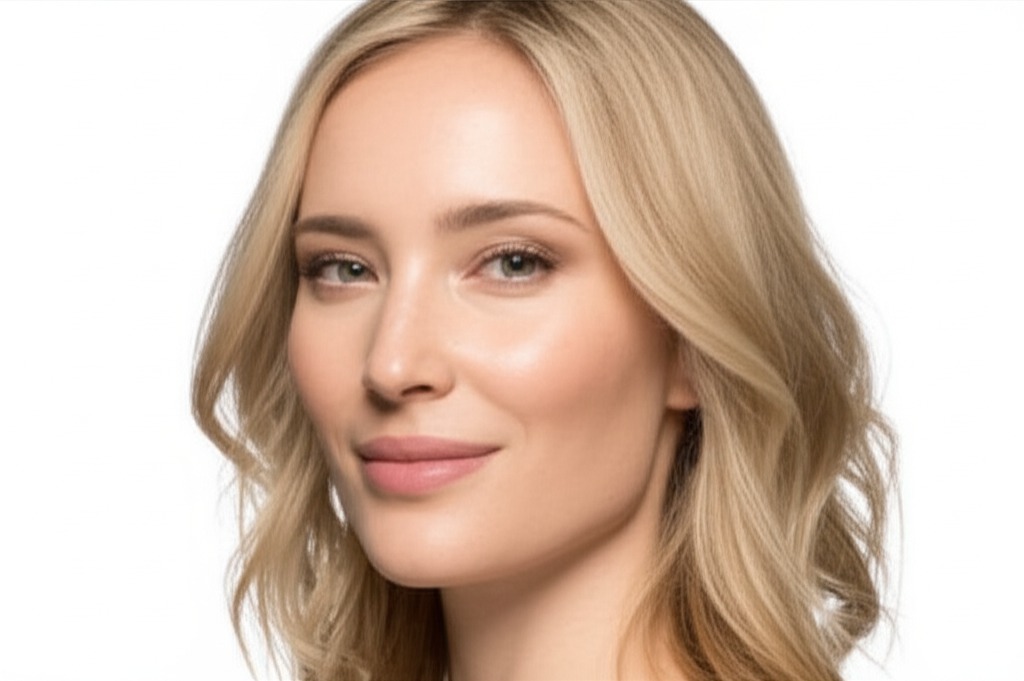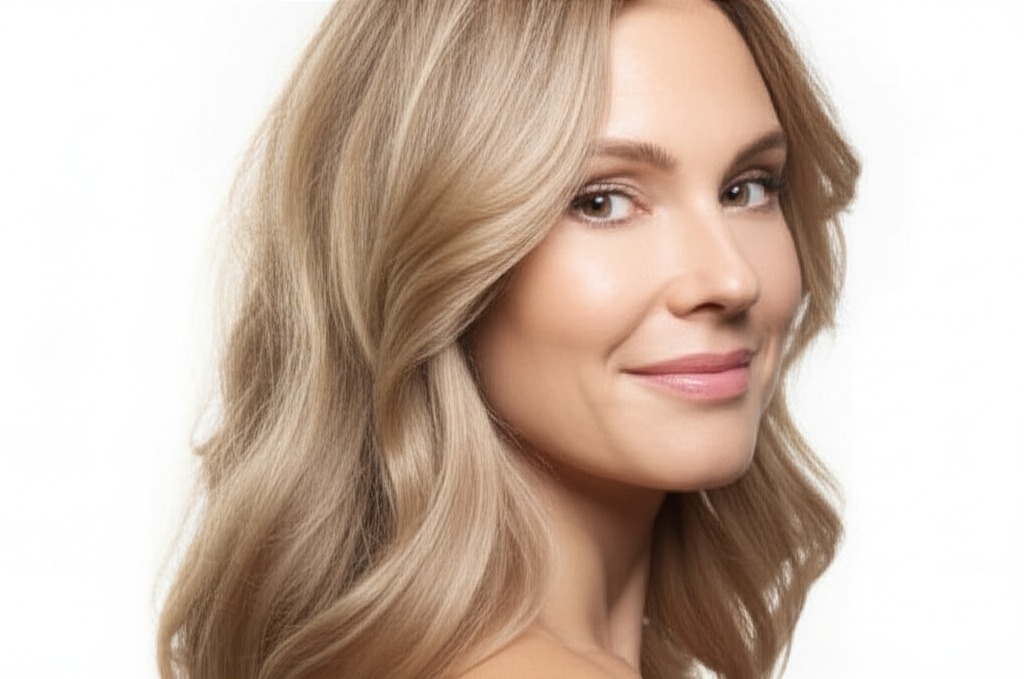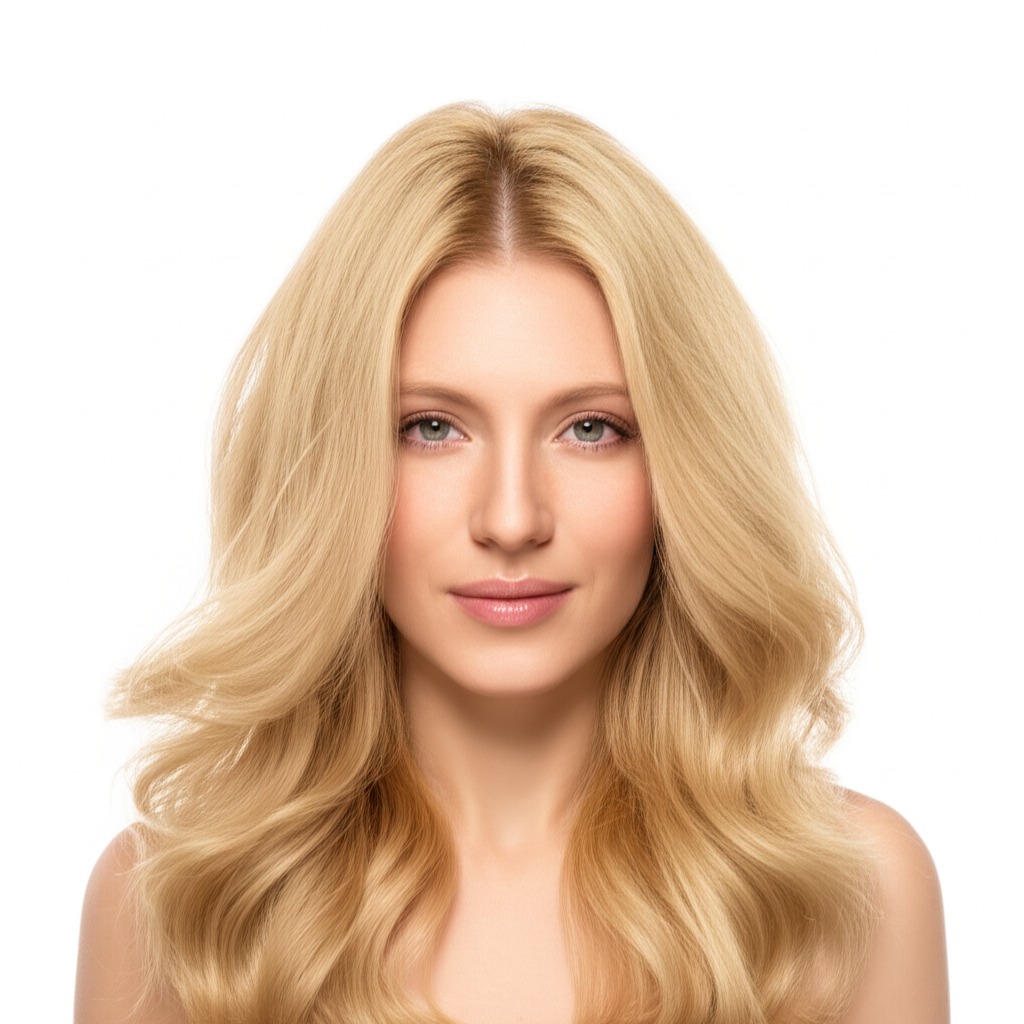#Baby Blonde: The Gentle Glow You've Been Dreaming Of
Baby blonde isn’t just a trend; it's an aesthetic—a soft, diffused lightness that evokes childhood innocence and effortless beauty. It’s about embracing a gentle radiance rather than a harsh, platinum look. This guide will break down everything you need to know about achieving and maintaining this coveted shade.
#1. Defining Baby Blonde: Undertones & Depth
Baby blonde isn't one single color; it’s a family of shades built around lightness and softness. Understanding its nuances is key to getting the right baby blonde for you.
- Undertone: This is crucial! Baby blonde most commonly leans towards cool or neutral undertones.
- Cool Baby Blonde: Think icy, silvery, with hints of pearl. It's often associated with a delicate and ethereal look.
- Neutral Baby Blonde: A balanced blend – not too warm, not too cool – offering versatility across skin tones. This is the most common interpretation of baby blonde.
- Warm Baby Blonde (Rare): While less typical, a very subtle warmth can work if your natural coloring leans that way. It's crucial to avoid anything overly golden or brassy; we’re aiming for a whisper of warmth, not a full-on golden hue.
- Depth/Levels: Hair color levels range from 1 (jet black) to 10 (lightest blonde). Baby blonde typically sits between levels 8 and 10 – very light! The difference within that range creates different variations:
- Level 8-9: A more grounded baby blonde, with a little more natural depth. Easier to achieve and maintain for those starting darker.
- Level 9-10: The quintessential baby blonde - incredibly bright and luminous. Requires significant lightening and is best suited for those already lighter or willing to commit to the upkeep.
#2. Who Does Baby Blonde Flatter?
While anyone can technically achieve baby blonde, certain features amplify its beauty.
- Skin Tone & Undertone:
- Fair Skin with Cool/Neutral Undertones: This is a classic pairing! The lightness complements fair skin beautifully.
- Medium Skin with Neutral Undertones: Can absolutely rock baby blonde! The key is to ensure the undertone doesn’t clash – neutral or slightly cool shades work best.
- Olive Skin: Requires careful consideration. A very subtle, neutral baby blonde can be stunning if executed expertly, but a cooler tone often looks more harmonious. Warmth needs to be managed carefully.
- Darker Skin Tones: While less common, it's possible! Requires significant lightening and the risk of brassiness is higher – expert colorists are essential.
- Eye Colors: Baby blonde complements almost all eye colors:
- Blue/Gray Eyes: The contrast creates a striking and captivating look.
- Green Eyes: Enhances their natural vibrancy and adds an enchanting quality.
- Brown Eyes: Provides a beautiful lightness that brightens the face.
- Natural Level Starting Points:
- Levels 1-5 (Dark Brown to Light Brown): Requires significant lightening, multiple sessions likely needed for best results & healthiest hair.
- Levels 6-7 (Medium Blonde/Light Golden Brown): Achievable in one or two sessions with proper care and planning.
- Levels 8-10 (Already Blonde): The easiest transition! Fine-tuning the undertone is usually all that’s needed.
#3. Technique Options: Building Your Baby Blonde
The right technique depends on your natural color, desired intensity, and commitment level.
- Single Process: Applies a uniform color from root to tip. Best for those already quite light (levels 8-10) who just want to refine the tone.
- Highlights/Lowlights: Adds dimension with lighter or darker strands. Can soften the overall look of baby blonde and add depth.
- Babylights: Ultra-fine highlights that mimic natural, sun-kissed hair. Creates a very soft, blended effect – perfect for achieving that authentic baby blonde glow.
- Gloss/Toner: Used after lightening to refine the undertone (eliminate brassiness, add coolness or neutrality). Essential for maintaining baby blonde’s signature delicate hue.
- Balayage-Effect vs Solid: Balayage creates a softer, more natural transition with less harsh lines. A solid application looks more uniform but can appear blocky if not expertly done. Baby blonde often benefits from the blended look of balayage.
#4. Maintenance & Longevity: The Commitment
Achieving baby blonde is an investment! Realistically assess your time and budget.
- Wash Frequency: Aim for 2-3 times per week, using color-safe shampoo.
- Toner Refresh: Typically every 4-8 weeks to counteract brassiness and maintain the desired undertone.
- Root Growth Pacing: The contrast between your natural roots and baby blonde highlights the growth – consider a “shadow root” technique for a softer transition or more frequent touch-ups.
- Budget/Time Planning:
- Low Commitment (Levels 8-9): $150-$300 per session, every 6-8 weeks. 2-3 hours in the salon.
- High Commitment (Level 9-10): $300-$600+ per session, potentially multiple sessions initially, then every 4-6 weeks for touch-ups. 3-5+ hours in the salon.
#5. Seasonality & Pairing with Cuts: Adapting Your Look
Baby blonde isn’t just a color; it's a style that can evolve with the seasons and your haircut.
- Cuts:
- Bob/Lob: The sharp lines of these cuts are softened by baby blonde, creating a chic and effortless vibe.
- Long Layers: Baby blonde looks stunning on long layers, enhancing movement and dimension.
- Pixie Cut: A bold choice! The lightness of baby blonde can make a pixie cut feel playful and youthful.
- Seasonal Tweaks:
- Summer: Embrace a slightly warmer tone for a sun-kissed glow.
- Fall/Winter: Lean into cooler, icier tones to complement the darker months.
- Occasions: Baby blonde is incredibly versatile!
- Work: A more subtle, neutral baby blonde is professional and polished.
- Daytime: Perfect for a casual, carefree look.
- Evening: Amp up the brightness with glossing treatments or shimmer sprays.
- Weddings: A romantic and ethereal choice!
#6. At-Home Care: Protecting Your Investment
Proper care is vital to keeping your baby blonde vibrant and healthy.
- Sulfate-Free Shampoo & Conditioner: Sulfates strip color, leading to faster fading.
- Clarifying Cadence: Use a clarifying shampoo occasionally (every 4-6 weeks) to remove buildup. Too much can dry out hair.
- Heat Protection: ALWAYS use heat protectant before styling with hot tools!
- Color-Safe Styling Tips: Minimize heat styling whenever possible. Air drying is your friend!
- Product Checklist: Color-safe shampoo, conditioner, deep conditioning mask, leave-in treatment, heat protectant, purple shampoo (for cool tones).
#7. Common Pitfalls & How to Avoid Them
Let’s tackle the common challenges of achieving and maintaining baby blonde.
- Brassiness: The biggest culprit! Prevent it with a good toner and use purple shampoo/conditioner regularly.
- Banding: Uneven lightening can create noticeable bands of color. A skilled stylist will ensure even saturation.
- Patchiness: Can occur if the hair isn't properly saturated during lightening. Multiple sessions are better than rushing the process.
#8. Pros & Cons: Weighing Your Options
Before taking the plunge, consider these factors.
Pros:
- Youthful and Radiant: Brightens your complexion and creates a youthful glow.
- Versatile: Works with various cuts and styles.
- Effortless Aesthetic: Embraces a natural, undone beauty.
Cons:
- High Maintenance: Requires regular salon visits and at-home care.
- Fade Risk: Color fades faster than darker shades.
- Potential for Damage: Lightening can weaken hair if not done properly.
#9. Salon Consultation Script: Setting Expectations
Prepare for your consultation with these prompts to ensure you and your stylist are on the same page:
- "I'm interested in baby blonde, but I’m concerned about brassiness – what steps will we take to prevent it?"
- "What is my natural level, and how many sessions do you think it will take to achieve my desired shade?"
- "Can you show me examples of different baby blonde variations (cool vs. neutral) so I can better visualize the result?"
- “How often should I expect touch-up appointments?”
- "What at-home care products would you recommend for maintaining my color and hair health?"
#10. FAQs: Your Burning Questions Answered
- Can I achieve baby blonde if my hair is already dyed? It's possible, but requires careful assessment by a professional to avoid damage or unpredictable results.
- Will baby blonde make my hair look flat? Not necessarily! Dimension can be added with highlights/lowlights and balayage techniques.
- How long does baby blonde last? Typically fades within 4-8 weeks without toner touch-ups.
- Is baby blonde damaging to my hair? Lightening can cause damage, but a skilled stylist will prioritize your hair's health throughout the process and recommend strengthening treatments.
- Can I do baby blonde at home? While possible for those already quite light, it’s risky without professional expertise – especially if starting darker.
- What is the difference between baby blonde and platinum? Platinum is a starker, cooler-toned blonde, whereas baby blonde has a softer, more diffused quality.
Achieving your dream of baby blonde requires careful planning, realistic expectations, and a trusted stylist! Embrace the journey to that luminous glow – you deserve it.
